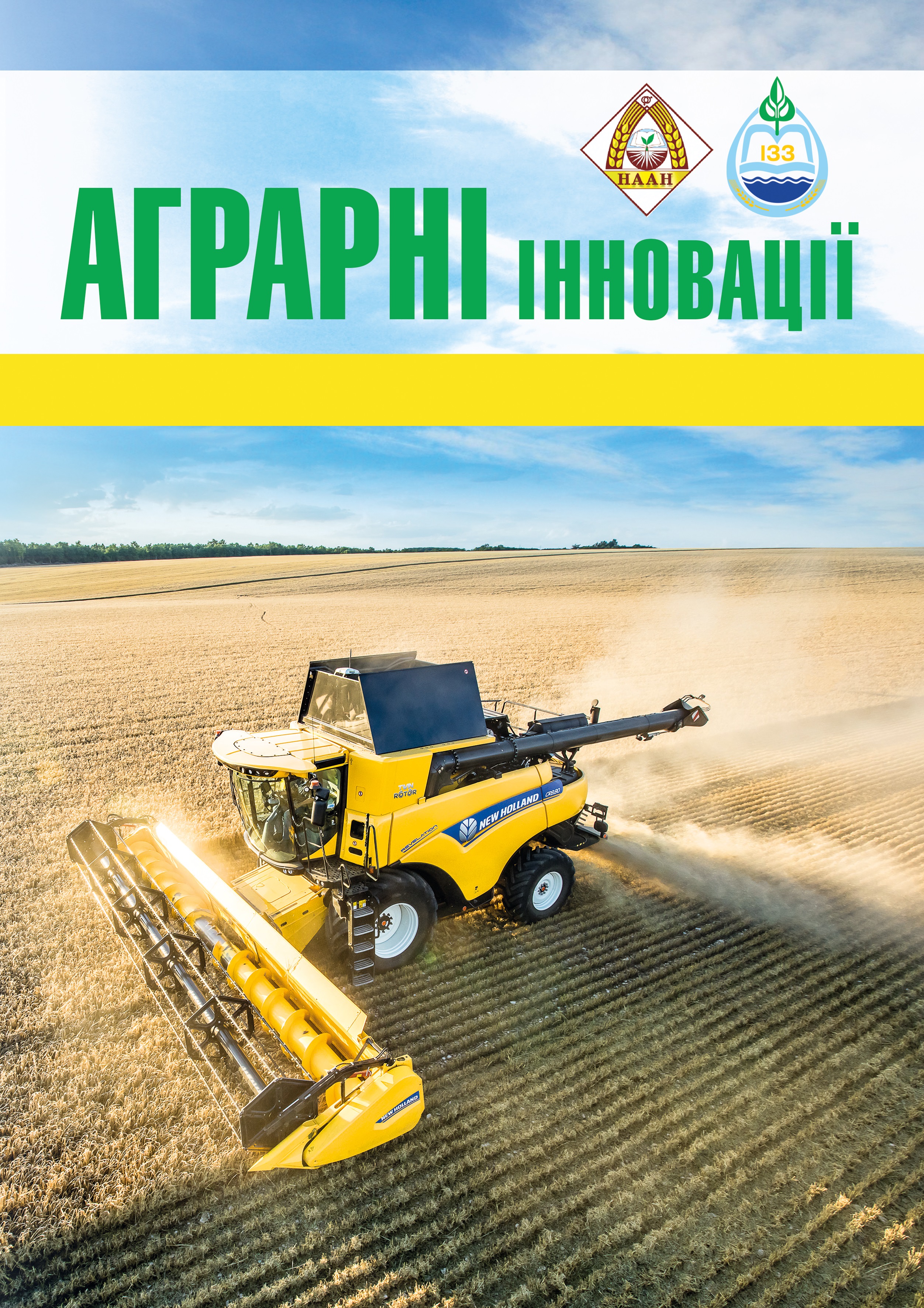INFLUENCE OF DESTRUCTORS ON THE MINERALIZATION OF PLANT RESIDUES AND THE BIOLOGICAL ACTIVITY OF THE DARK CHESTNUT SOIL OF THE STEPPE ZONE WITH A DIFFERENT SYSTEM OF ITS PROCESSING
Abstract
Purpose. The increase of soil fertility on the basis of determination of the regularities of changes in the soil processes and formation of yield at the application of microbial preparations and byproducts of crops in crop rotation at different tillage systems. Methods. Field, laboratory, calculatory and statistical. Results. It was determined that the degree of destruction of winter wheat stubble for three months under the influence of destructors increased 2.2–2.6 times in comparison to the control. The highest intensity of plants’ residues decomposition was under the influence of preparations “Ecostern” and “Organic-balance” – 54.5 and 50.2 % respectively, while on the control it was 21.2 %. Application of the preparations-destructors led to the increase of spring barley yield by 0.01–0.27 t/ha. At the conditions of plowing the preparations “Organic-balance”, “Biodestruktor sterni” and “Destructor tseliulozy” were more efficient and provided the increase to the yield of 0.15–0.27 t/ha. Organic-balance performed better at the shallow tillage. Conclusions. Application of microbial preparations-destructors in the conditions of Southern Steppe is an efficient way of the improvement of biological activity of soil and the increase of crops yield. Their efficiency is significantly increased under conditions of sufficient moisture of the soil, resulting in the increase of the degree of destruction of plant residues 2.2–2.6 times in comparison to the control. The most intensive destruction of plant residues occurs in the conditions of plowing, when they are evenly incorporated throughout the whole depth of the arable soil layer.
References
2. Говоров О.Ф. Що робити з соломою? Пропозиція. ТОВ «Юнівест Медіа». 2014. № 5. С. 118.
3. Маклюк О.І., Найдьонова О.Є. Біологічно активні ґрунти: як їх сформувати. Пропозиція. ТОВ «Юнівест Медіа», 2014. № 10. С. 68.
4. Болоховська В.А., Нагорна О.В. Біодеструктори на сторожі здоров’я ґрунту. Пропозиція. ТОВ «Юнівест Медіа», 2012. № 5. С. 60.
5. Таркалсон Д., Браун Б., Кок Г. Последствия уборки соломы с поля при возделывании пшеницы и ячменя. Агроном. 2015. № 2. С. 192.
6. Carter D., Findlater P. Erosion potential of phomopsisresistant lupin stubbles. West Australian J. of Agrikulture. 1989. Vol. 30. P. 11–14.
7. Fowber D., Brydon J. No-till winter wheat production on Canadian prairies: placement of urea and ammonium nitrate fertilizers. Agronomy J. 1989. Vol. 81. № 3. P. 518–524.
8. Скрильник Є.В. Ефективність використання піс-ляжнивних решток. Пропозиція. ТОВ «Юнівест Медіа», 2013. № 7. С. 64.
9. Нагорна О.І. Керувати родючістю можна. Посібник українського хлібороба. ТОВ «АКАДЕМПРЕС», 2013. Т. 1. С. 11.
10. Боговін А.В. Біогеоценотична роль взаємовід-носин живих організмів у становленні та функціону-ванні екологічних систем. Екологія та ноосферологія. Дніпропетровськ, 2009. № 1–2. Т. 20. С. 102–117. 11. Волкогон В.В., Надкренична О.В., Кова-левська Т.М. та ін. Мікробні препарати у землеробстві. Теорія і практика. Київ : Аграрна наука, 2006. 312 с.






